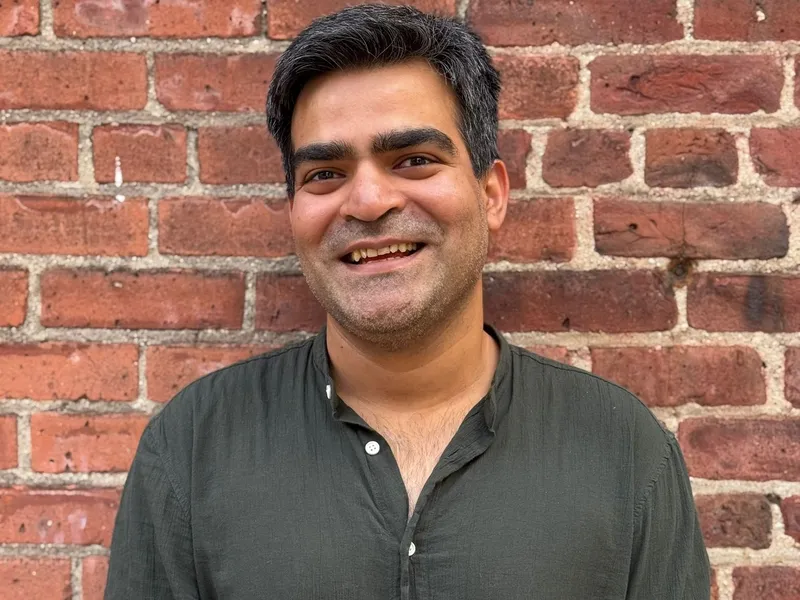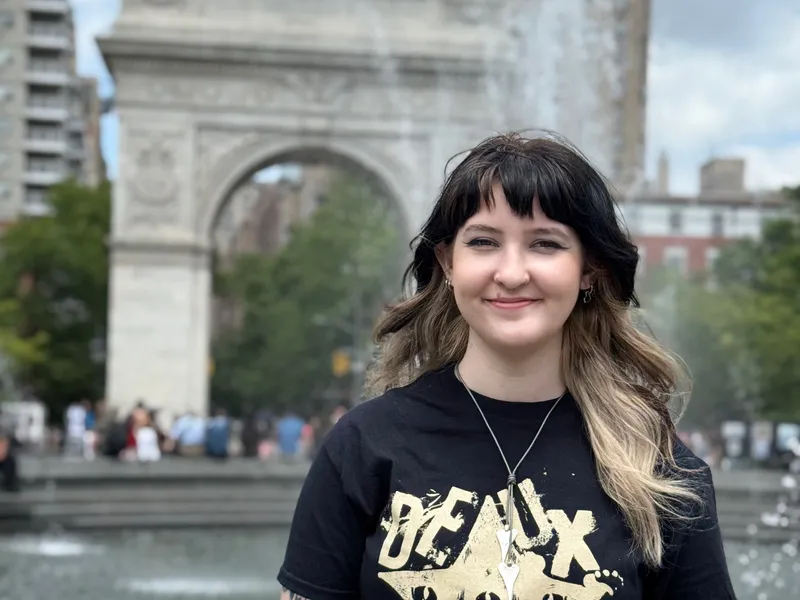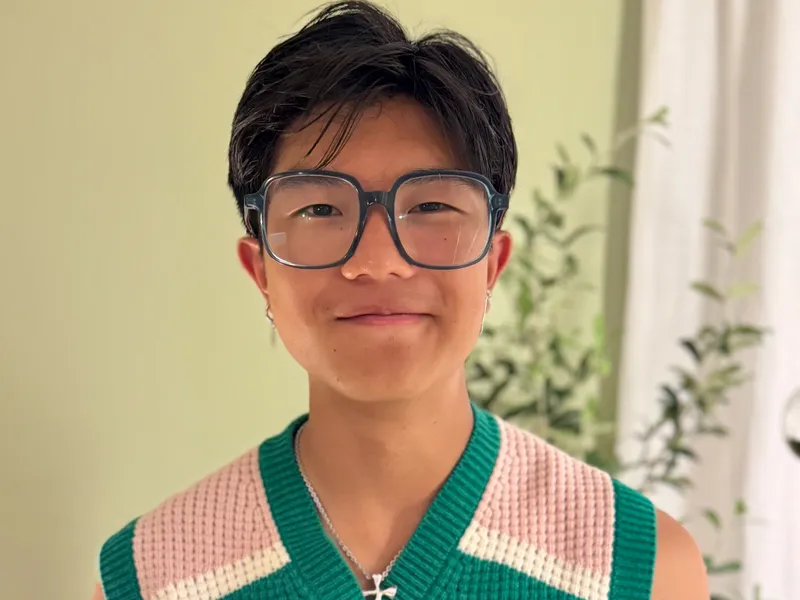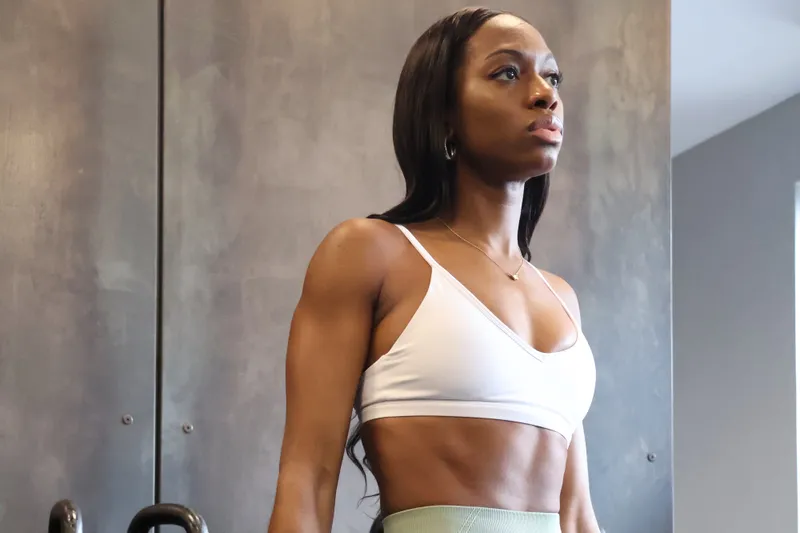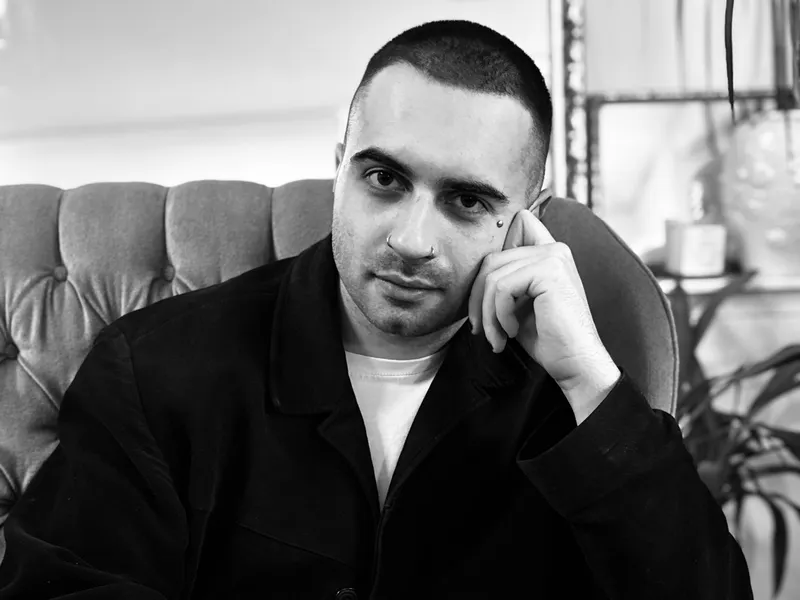From Art Marketing, Digital Ads, Tech Ops, and Program Management into A UX Career and Unparalleled Self-Branding
Written by Miki Anderson, in partnership with Wanxiety
The world is your oyster, they say. For a career switcher, however, it’s more like the Bermuda Triangle than a yummy shellfish — a whirlwind of excitement, disappointment, hard work, and anxiety (wanxiety!) that continually tests you. Today, I’ll share how I navigated my transition into UX focusing on the career narrative, hoping to inspire career-switchers, especially aspiring UX designers.
Table of Contents
-
I. What UX Designers Do
-
II. My Path into UX
-
III. Today’s UX Job Market
-
IV. Helpful Resources
-
V. Advice for Career Switchers
First Thing First - What UX Designers Do
Here is the definition by the industry-leading organization: the “User experience” encompasses all aspects of the end-user’s interaction with the company, its services, and its products. - Nielsen & Norman Group
While UX design practices vary by organization, the core activities typically include: understanding user needs through studies such as user interviews, defining the problems that need solving, brainstorming solutions through workshops and sketches, architecting the user interactions and data flows in a digital product, validating the solutions through usability testing, designing interfaces with tools like Figma, and continually improving the product to enhance accessibility, inclusivity, and profitability. Throughout the processes, we closely collaborate with product managers, engineers, architects, data scientists, marketing, content writers, legal, and many other disciplines. I will not go into any more details as this is a place to discuss work-related anxieties and career switches, but you can lean on organizations like the aforementioned Nielsen & Norman Group and learn more about the discipline.
My Path into UX
TLDR: I transitioned from various non-tech roles into UX. What once seemed unrelated now forms a unique career narrative and my personal brand. Here’s my story.
Art Era: Art Marketer in Paris (bonjour!)
Born and raised in Tokyo, I was inspired by my grandmother’s arts & crafts collections, which masterfully balanced aesthetics and functionality by design. This led me to major in Art History and pursue a Master’s in Creative Marketing and Management in France. My first job was as a marketing coordinator for a Parisian licensing agency, representing renowned artists like Keith Haring and Jean Michel Basquiat. This role, which married creativity and business, set me on the path of a synthetic career.
Art Nerd Meets Technology
After moving to New York, I took on many different jobs. I worked for well-established contemporary artists, producing their exhibitions, books, and digital presence, including their e-commerce presence. I once sold vintage Egyptian cinema posters and considered joining a satellite Japanese ad agency. It was when I started working for an online media and marketplace, Artnet, as a digital advertising associate that a new dimension was added to my passion, in the center of the trifecta between art, business, and software. I was truly hooked by how creative content was consumed in the digital landscape and how a single UI component’s design or position within a page layout could change the way users perceived the content and controlled their consumptive behavior completely.
Deciding the Career Change
I took my first UX education in 2017 out of curiosity. I wasn’t aiming to become a designer; I just wanted to understand how digital products were created. I chose not to pursue coding because my strengths leaned more toward visuals, and I could never grasp the technical jargon my husband, an engineer, used in his meetings (now I do better!). The course was an eye-opener, and, at the same time, it taught me how little I knew about the software industry and how the majority of the art institutions did not invest in technology as a whole. I decided to leave my job and the art industry entirely and seek a career in product and tech. It made me scared to leave the industry I had familiarized myself with, but I was also super excited about the seemingly infinite opportunities in tech and UX, and the concoction of fear and excitement fueled me to be hyperactive in the job search.
Transition into UX
I began networking actively and met a software engineer at a large fintech enterprise during a career fair, which led to a job offer. Despite being new to the industry, I was drawn to the company’s robust in-house product, engineering, and UX teams. Trusting my instincts, I joined their technical operations team. While my main responsibility wasn’t design-focused initially, I continuously manifested and tried to apply the User Centered Design methodologies in my day-to-day job. I raised my hand for every opportunity to design services or programs, collaborate with engineers, and network. Outside work, I continued engaging in the community and organized a UX pitch contest for emerging designers by partnering with technical recruiters from Robert Half, Infor, Knotch, and Salt. Within less than two years after I joined the company, I achieved my internal transition into the UX department as a Consistency Designer, specializing in managing the UX guidelines and design systems of a large SaaS product.
Anxiety in Career Transition
My transition into UX there was not easy. I was assigned to a team focusing on trading systems, which had many complex user experiences and rules to abide by. My confidence waned daily. I kept asking, “How did I end up here, surrounded by tickers and arrows instead of art?” until one day, a work therapist helped open my eyes. He told me that feeling this way in a new career was not only normal but that the same stress and anxiety, although challenging, had surely driven me to achieve milestones in the past. It was a simple 15-minute chat, however, this revelation helped me see my anxiety in a completely different way. I shifted my focus from worrying to pushing myself to learn the new domain and making “allies” in the department whom I could lean on to guide me when I felt stuck. One of the most stressful times of my life ended up being a significant moment of growth. There are many different coping methods for anxiety, and mine was to acknowledge it as my agency that helped me work harder and smarter. I am not glorifying anxiety, but reframing it as an incentive could probably change the way you navigate the tough moments.
Tell a Unique Career Story
After over a year at the fintech UX org, I was headhunted by Sotheby’s for a Technical UX Program Manager position. If you don’t know, Sotheby’s is the world’s largest art auction house. This opportunity felt like a crystalization of all the jobs I had committed myself to, which once seemed somewhat incoherent, but now made perfect sense all of a sudden. Coming from the art world, passing through where it joined the technology and into the pure tech world, I finally found a place where I could blend everything together. My job at Sotheby’s helped expand my skills through the roof both as a UX designer and program manager. I led their design system management and mobile app redesign initiatives. As it was not a traditional “tech” company, there was not as much structure and resources there as in my former employer; everything was changing every day, and the concept of agile software development was not fully rooted in their practice. These challenges pushed me to be proactive in acquiring relevant knowledge, problem-solving, and advocating for my UX and product peers.
What’s Next? - Today’ UX Job Market
I can proudly say that I achieved many great things at Sotheby’s; however, landing your dream job is never the end of the story; it’s only the beginning (of, sometimes, another Bermuda Triangle and wanxiety!). Unfortunately, I was affected by a recent company-wide layoff. The company decided to reallocate resources, reducing many of the initiatives my team was involved in (the entire team dissolved, alas). The reality hit me hard, and today’s UX job market is a complete joke. It has never been this difficult to land a UX job, especially for newcomers. There are many articles that explain why it is like this, and that’s a story for another day, but if you are interested, read[this]; I found the stats very interesting. Now, let’s rather talk about what helps in a time like this. If you are someone with motivation, good self-discipline, sound financial planning, and kindness to yourself to ride through this trip, buckle up!
Helpful Resources
I will share some hard and soft resources that helped me in the transition. I am intentionally skipping the day-to-day tools we use in design. There are so many resources already out there, and it’s less relevant to Wanxiety’s content.
Educational Programs
There are some good boot camps, but to be honest, boot camps will not give you everything you need to become a great UX designer, but they prepare you well for the start of a long journey ahead. Consider them as an introduction. These are the ones that I have come across and heard good things from the alumni.
Other educational resources I find great:
-
Interaction Design Foundation (IxFD); I like their specialized courses, such as the accessibility course, Getting Dashboard Right, Gamification, etc.
-
N&N Group; They offer courses in different disciplines within UX, such as Information Architecture, Facilitating UX Workshops, UX Leadership, and Emerging UI Patterns.
-
Design System University by Dan Mall; He is the guru of design systems.
-
Intro to AI Product Design; I really liked my instructor Robert Redmond, and it seems like they have different instructors from the following cohort.
-
YouTube; I love the design critiques or heuristic review type of videos
Habits - What Takes You Beyond Education
Education will only take you so far. What helps you become a good designer is acquiring tangible skills and so-called design muscles. Here are some practices I have done myself and found helpful.
-
Copywork: Try to recreate the UI and interactions of apps/websites’ screens in Figma.
-
Polish visual design skills: This is very important, especially for career switchers who do not necessarily come from a design background. Ask yourself why you feel attracted to certain types of UI and not others. Learn some theories like typography, color theory, and grid systems.
-
Analyze the architecture of the apps you use: Ask millions of questions about specific UI elements while at it and familiarize yourself with patterns: “Why is there a search bar at the top of this screen?” “Why is this app using tabbed navigation instead of a simple feed?”
-
UX Influencers? Use them wisely: This is my personal experience, but there used to be (still are?) lots of marketing-heavy videos made by influencers promoting certain boot camps or just selling a UX career by showcasing the sweet six-figure salary and cute MAANG swags (okay, I am jealous of those!) without explaining what really makes you a great designer. Some influencers are great and I am thankful for them sharing their experiences and motivating us, but just a heads-up so you are choosing your sources with care.
Mentorship and Coaches
As I’ve conveyed throughout this article, the key to building a UX career is finding your niche and brand. It was my involvement in art and finding its conjunction with technology, in my case. I just met a very established UX Manager who switched from chemistry working in a lab to becoming a UX expert in health tech. I know a former yoga teacher who got a designer job at Equinox, and continues working in the field. Everyone’s story is different, and meeting fellow switchers through mentoring programs is always inspiring.
Communities and Resources
-
Figma Community and Forum; It’s helpful when you are looking for tools to speed up your design processes or when you have some tactical questions about Figma.
-
UX Stack Exchange; A forum for designers, just like the Stack Overflow for programmers. It’s helpful when you don’t have the time and resources to conduct research to answer every single design question and you want to learn from people who have come across them in the past.
-
Mobbin; A database of existing mobile apps with screenshots, flows, and UI patterns. Can’t live without it.
-
HIG Apple’s Human Interface Guidelines); The bible for any iOS designers and devs. Helps you learn the anatomy of digital products and components.
-
Material Design 3 (Google’s open-source design system); The same but for Google and Android stack.
-
IDEO; Inventor of the term “design thinking”. While their recent massive downsizing caused a little noise in the industry, I think their resources are still relevant and innovative.
-
UXTools; A repository of simple UX challenges you can practice.
Books
I don’t have a list of books because I don’t read as many books as I should…
But[here] is a list of “UX must-reads” from the IxDF, where I see some books I read and found helpful.
My Humble Advice for Any Career-Switcher
As cheesy as it sounds, trust yourself and the path you have taken. If ever you feel that you are a “less-qualified” individual because you are a job switcher with less experience in the specific field, let’s change your mindset. Your past makes you who you are today, and there has to be a story about why you want to break into that field. It took me years to figure this out, so not to panic if there isn’t one yet. One last thing - it will be stressful to navigate a career change, and you will be anxious at times, and that’s not always a bad thing. Try to recalibrate the moment of self-doubt into a moment of growth. You got it :)
← Back